 Features
Features

Provinces and cities where the pandemic is under control, such as Quảng Ninh, Kiên Giang and Hà Nội, are planning to open to both domestic and international tourists, but strict pandemic prevention measures will be applied
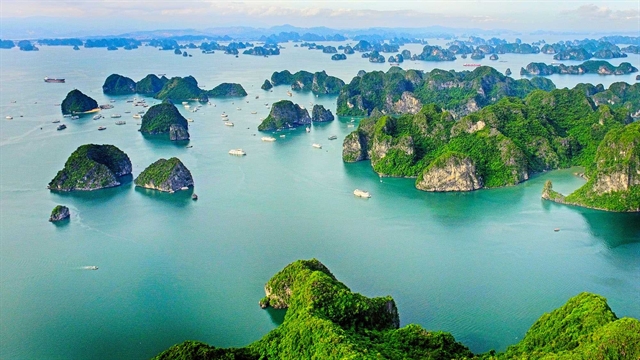
|
| The aerial view of Hạ Long Bay that was recognised by UNESCO as a World Natural Heritage. Photo quangninh.gov.vn |
Despite living just a few miles from the beach, it was only recently that Đoàn Hoàng Nguyên, a resident of in Hạ Long City in the northern province of Quảng Ninh, could swim in the sea again, after nearly three months staying at home.
Hà’s family and thousands of others flocked to the beaches of Hạ Long Bay and other local tourist attractions on September 19 when the city became the first locality in Quảng Ninh to open its doors to intra-provincial tourism, lifting almost all its coronavirus prevention restrictions.
“My family lives by the sea but due to the pandemic, we had to spend most of our summer holiday indoors. Today, we decided to swim for as long as we could then go to our favourite seafood restaurant to celebrate the reopening of the city,” the 38-year-old said.
After over three months without any community transmission of the coronavirus, Quảng Ninh is now considered a safe destination for tourism.
The province, home to UNESCO-recognised heritage site Hạ Long Bay, has resumed intra-provincial tourism and entertainment since September 21, but only for vaccinated residents.
To date, over a million adults in the province have received at least one dose of COVID-19 vaccine, reaching over 105 per cent of the initial plan. Among which, about 171,000 have had two jabs.
Restaurants, hotels, movie theatres, cruise ships and outdoor activities can resume but must abide by pandemic prevention measures. Meanwhile, all local tourist spots, cruise ships, accommodation facilities and religious sites are open to residents who have had at least one COVID jab.
All staff at facilities that provide tourism services must have had at least one vaccine dose and be tested regularly.
The Quảng Ninh authorities also plan to welcome back tourists from outside the province starting this November.
“Ensuring safety from the pandemic is the most important condition for the province to resume tourism,” said the Secretary of the Provincial Party Committee, Nguyễn Xuân Ký. “Demand from domestic tourists in the last three months of the year will be high.”
He said that tourists from outside the province have to abide by strict regulations. In the first phase of reopening, Quảng Ninh will only receive visitors from northern provinces without any community transmissions for 14 consecutive days. At the same time, they must be fully vaccinated and furnish a negative PCR test certificate obtained within 48 hours before arrival.
The province will prioritise high value-added tourism and models that do not pose risks to local communities while encouraging self-contained, long-stay tours.
With experience in receiving overseas Vietnamese and international specialists from pandemic hot spots around the world and offering isolation facilities, Quảng Ninh is also preparing to welcome visitors with vaccine passports from abroad.
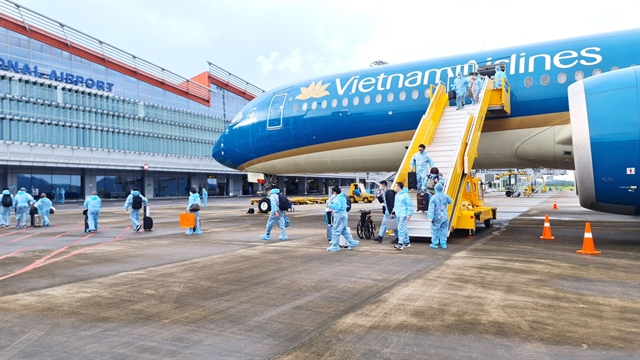
|
| A pilot programme receiving overseas Vietnamese with vaccine passports was launched in Quảng Ninh province in September. VNA/VNS Photo |
The northern province is the first locality approved by the Government to pilot a programme applying a seven-day quarantine to visitors with vaccine passports, which kicked-off on September 4.
The programme has had four pilot flights, receiving 943 overseas Vietnamese from Japan, the US, South Korea and France. After arriving at the airport, passengers were immediately transported to authorised hotels in Hạ Long City where they were isolated for seven days before being isolated for another seven days in residential areas.
All passengers had to meet two conditions: receiving full doses of vaccine and having a negative test result within 72 hours of departure.
To date, those on flights on September 4 and 12 have all safely returned to their localities after completing the requested quarantine period in Quảng Ninh.
“Those pilot flights have been smooth and safe, helping to establish trust in the early resumption of domestic and foreign trade activities,” Director of Vân Đồn International Airport, Phạm Ngọc Sáu, told Người Lao Động (Labourer) newspaper.
“This will serve as data to review, evaluate and draw lessons before the widespread deployment of ‘vaccine passports’ that aims to harmonise the goals of economic development and epidemic control.”
The province aims to attract about 2 million tourists and obtain a total revenue of VNĐ4,000 to 4,500 billion (US$176-198 million) in the fourth quarter of 2021.
Phú Quốc Island in the southern province of Kiên Giang, has also finished detailed plans to receive fully-vaccinated foreign tourists from November this year, even though the island has recorded a new coronavirus outbreak.
Based on the vaccination situation on Phú Quốc and new epidemic developments, the Ministry of Culture, Sports and Tourism said that late November or early December would be the official opening time for Phú Quốc.
Initially, the island will only welcome tourists who have booked package tours organised by travel agencies, who enter Việt Nam by air through charter or commercial flights.
The province has selected 14 four- and five-star hotels for the pilot programme, with a total capacity of 8,000 rooms. All staff have been fully inoculated against COVID-19.
In the first three months of the plan, the island is expected to welcome 3,000-5,000 tourists a month, initially to limited destinations on the island.
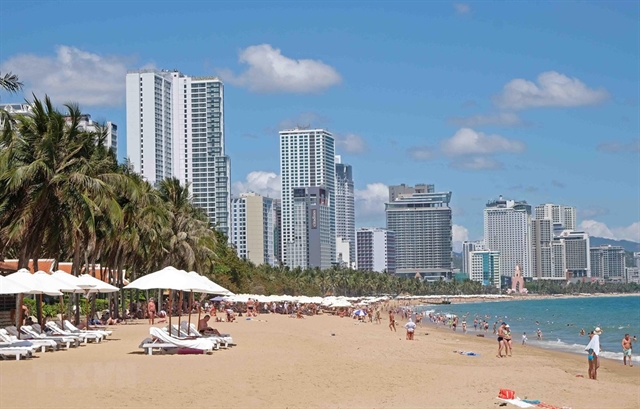
|
| Khánh Hòa Province is devising plans to welcome back domestic tourists from October 15 and foreign visitors by December. VNA/VNS Photo Nguyễn Dũng |
Similarly, Khánh Hòa Department of Tourism has said it is preparing to welcome back domestic tourists from October 15 and foreign visitors by December.
The tourism department is developing promotions to encourage local residents to travel within the province before reopening the province’s beach resorts to tourists from neighbouring provinces and ultimately to those from major cities such as Hà Nội and Hồ Chí Minh City as soon as airline services return to normal.
Other provinces and cities such as Hà Nội, Hà Giang, Tuyên Quang, Bắc Kạn, Lào Cai, Thanh Hóa, Bà Rịa-Vũng Tàu and Cà Mau where the pandemic is temporarily under control are also planning to revive tourism industry.
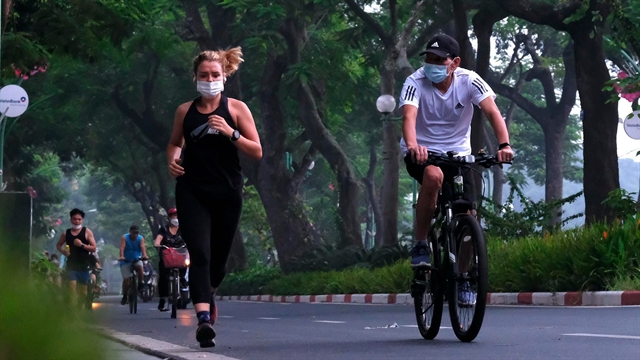
|
| Residents in Hà Nội are seen exercising as the city has permitted outdoor sports of no more than 10 people since September 28. VNS Photo Việt Thanh |
In preparation for the recovery of tourism, the Ministry of Culture, Sports and Tourism has issued a plan focusing on six key tasks and solutions, including strengthening communication and promotions.
Tourism in Kiên Giang Province will be promoted first to ensure the implementation of the pilot programme to receive vaccinated foreign tourists, which will serve as a model for other tourist attractions to open their doors.
Meanwhile, the tourism sector will continue communication and promotion activities as part of the "Vietnamese Travel Within Việt Nam" and "Việt Nam Tourism - Safe and Attractive" programmes. Domestic tourism is considered the backbone for the entire sector.
The Director General of the Việt Nam National Administration of Tourism, Nguyễn Trùng Khánh, said tourism promotion should be publicised online, so the organisation has digitalised information about national tourist attractions, created a Việt Nam safe travel digital map and integrated it with the "Vietnam Safe Travel" application.
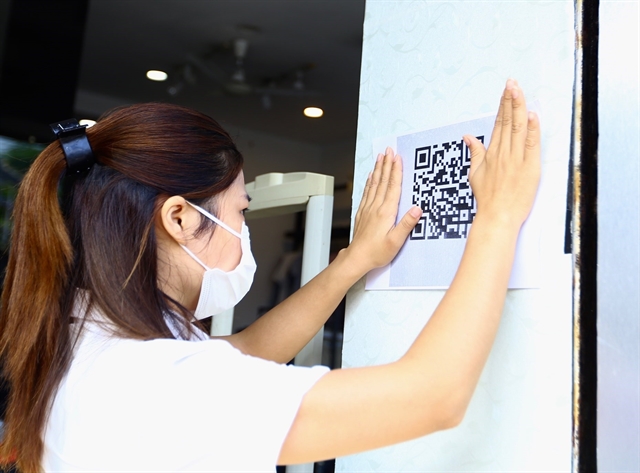
|
| Customers at stores in Hà Nội are asked to scan QR Code for check-in. VNA/VNS Photo Hoàng Hiếu |
He also emphasised the necessity of vaccinating residents of destinations that receive external tourists.
“The Vietnam National Administration of Tourism has suggested a separate policy on COVID-19 vaccines for a number of key tourist centres with an aim to create a safe travel environment, thereby restoring domestic tourism and attracting international tourists,” he said.
Addressing a recent online conference on the impact of the pandemic, Minister of Culture, Sports and Tourism Nguyễn Văn Hùng said that the ministry was expecting the quick resumption of tourism.
“Localities where the pandemic is controlled need to strengthen mutual connections, organise investment and promotion conferences to restore tourism,” he said.
“The tourism sector needs to strongly focus on exploiting the domestic tourism market and be prepared for the re-opening of international tourism.”
He emphasised the need to quickly put the Development Assistance Fund into operation to enhance effectiveness of tourism promotion and management.
In 2020, international visitors to Việt Nam decreased by 80 per cent, domestic tourists decreased by 34 per cent and total revenue from tourism decreased by 59 per cent compared to the previous year.
In the first eight months of 2021, the number of domestic tourists reached 31.2 million, down 5.5 per cent over the same period in 2020, of which 16.1 million stayed overnight at tourist accommodation.
Total revenue from tourism in the past eight months reached about VNĐ 136,520 billion (US$5.9 million). VNS
| Hà Nội’s preparation for a tourism recovery Tourist enterprises in Hà Nội are devising plans to attract domestic tourists back to the city, though international flights to Việt Nam have not yet resumed. Many attractive tourist offers are being developed and stimulus programmes are ready to be launched, on the basis of ensuring maximum safety for tourists and those operating in the tourism industry. The Hà Nội tourism sector is also concentrating on prioritising improving the quality of cultural and heritage destinations, as well as craft and ancient villages. The industry plans to expand the development of agricultural, community-based and health care tourism as well as to promote tourism related to international events and conferences. The Hà Nội Department of Tourism has told agencies to form attractive and specialised tourism products and services to create new experiences, meeting the needs and tastes of holidaymakers. Given the high risk of possible COVID-19 outbreaks, meeting pandemic prevention and control requirements while ensuring safety for visitors and the wider community remains a priority.
|




